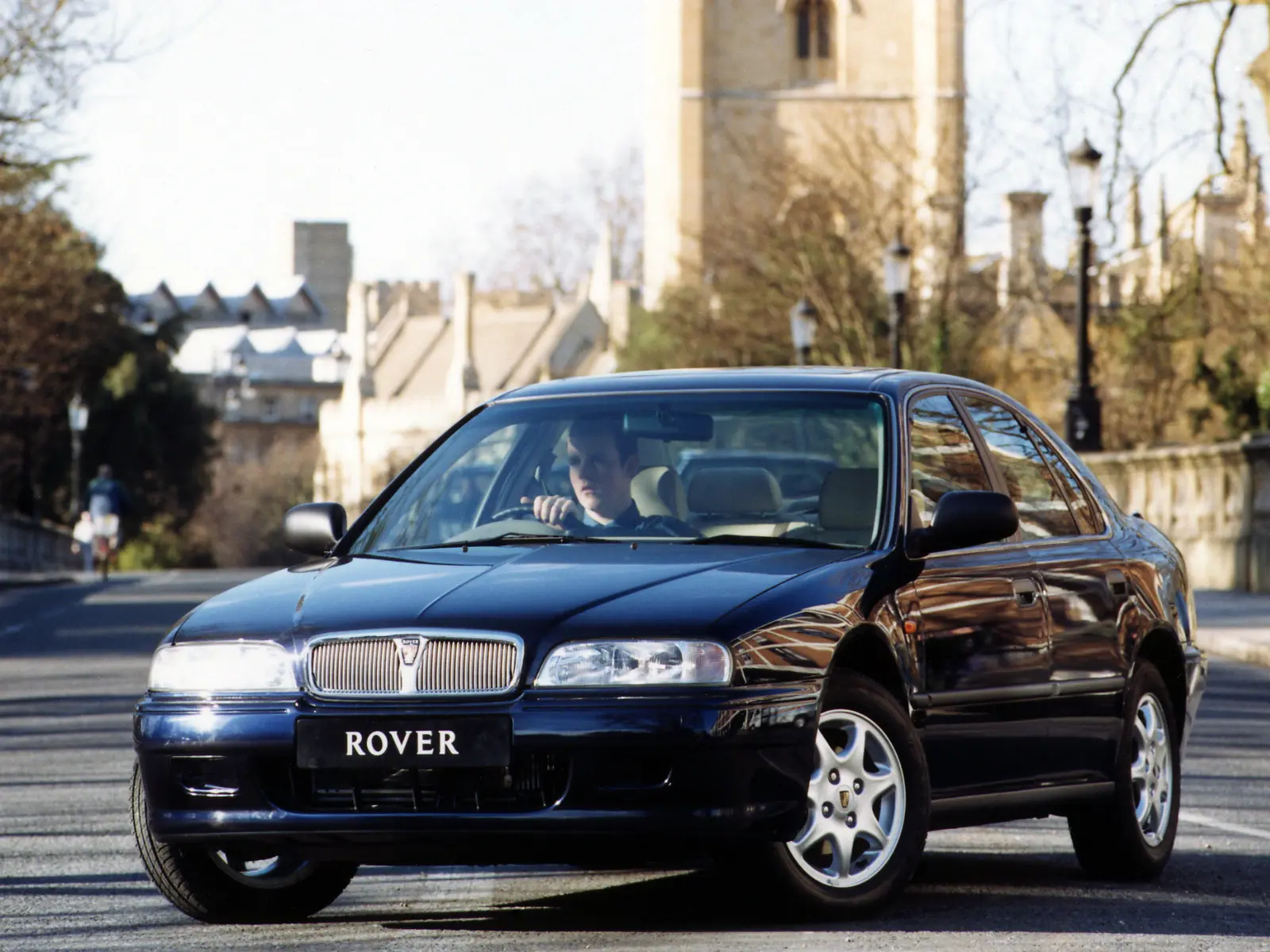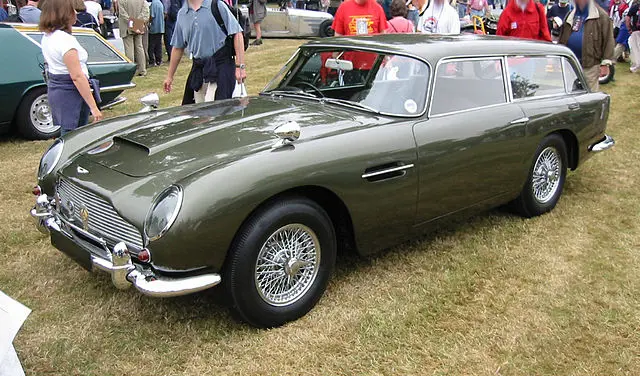10 reasons to visit the British Motor Museum
21 December 2021
Q: Where would you need to go to see the world's largest collection of historic British cars?
A: That would be the British Motor Museum in Warwickshire, under whose roof you'll find around 300 vehicles from the UK's rich motor manufacturing history.
The collection came about in the 1970s, when British Leyland formed a special department to look after its own collection of historic vehicles. First headquartered at Studley, Warwickshire, near to many of the main BL plants, the collection eventually found its current home at the former RAF Gaydon airfield in the late 1980s.
Now, alongside that wealth of wonderful vehicles from each chapter of Britain's automotive past, you'll find an archive of over two million photographs, business records, brochures and drawings.
In short, the museum is a must-see for anyone interested in the cars that we have produced over the decades – and, of course, for all fans of classic and vintage cars. Which includes us here at Lancaster Classic Car Insurance and, we imagine, many of our customers.

Here are 10 key reasons to make the journey to the British Motor Museum.
-
See some of Britain’s motoring greats
A list of the fascinating cars on show at the British Motor Museum reads like a guide to the highways and byways of British automotive engineering. Highlights include the last Aston Martin DB7 ever produced – plus a rare Land Rover Llama lorry, built in the 1980s in the hope of winning a contract from the Ministry of Defence.
They've also got the Austin Metro 1.3 HLS that was shown to an admiring public at the 1980 Motor Show, as well as a Metro 6R4 rally car. A wildly souped-up beast that bore little relation to its roadgoing counterpart, the 6R4 was created for the swashbuckling Type B rally format in the mid 1980s.
You'll also get to see a Sinclair C5, that visionary but flawed battery-electric tricycle from inventor Sir Clive Sinclair. Eye-catching and cheap to buy and run it may have been, but the C5's limitations – its 15mph top speed, short battery life and lack of protection against the worst of the British weather – made it impractical for most people's needs. Condemned to become no more than a footnote in motoring history, the C5 is a fascinating footnote nonetheless.
Elsewhere, you can see the Ford Escort Mk1 that won the 1970 London to Mexico World Cup Rally, lending the name 'Mexico' to the Escort's sporting variant from then on. Fascinatingly, there's also an ultra-rare estate concept of the Rover SD1, used personally by Leyland boss Sir Michael Edwardes. One of the most beautiful vehicles on display, meanwhile, is an Alvis TE21, a big, handsome sports saloon that illustrates perfectly how, in the 1960s, Britain was producing some of the most potent, elegant and just plain desirable cars in the world.
-
Relive motoring history on the Time Road
One fascinating feature is the Time Road, where visitors are able to walk along a century of motoring history beginning in 1896, and see for themselves how profoundly motoring has changed.
This promenade exhibition explores changes not only in the cars themselves, but also in the roads they were being driven on and even the fashions that surrounded them. It explores key moments in UK automotive and driving history: the introduction of cat’s eyes, the first ever driving test, Britain's very first motorway and more.
-
Learn about the real people behind the cars
The Museum's new exhibition Factor Us In tells the stories of three West Midlands communities that have been intimately bound up in the story of motor manufacturing. Using a mix of archive material, artefacts and oral history videos and recordings, the exhibition explores how car manufacture shaped the lives of communities in Canley (Coventry), Lode Lane in Solihull and, of course, the Longbridge works in Birmingham itself. It delves into how, both during their working lives and afterwards, the factories in these three neighbourhoods had a profound effect on the lives of local people for around a century.
All three factories played a central role in Britain's early and mid-20th Century supremacy in the automotive world. The Canley works were home to the Standard Motor Company, later Standard-Triumph, and produced a line of iconic Triumph cars including the TR6 and the MG-rivalling Spitfire.
Lode Lane (now simply called Solihull) is tightly bound up in the story of Land Rover, as both the original 4x4 and the Range Rover were developed there (as well as big Rovers like the P6 and SD1). Longbridge needs no introduction, being the centre of production for numerous British Leyland / Rover classics like the Rover 400, 75 and Mini.
-
Choose your favourite concept car
From the otherworldly Alfa Romeo Carabo to the extraordinary Citroen Karin, we've always been fascinated by concept cars – those wonderful vehicles where designers are given free rein to explore new looks, styles and functionalities, without being hamstrung by such petty concerns as production costs or likely sales figures.
And the Design & Concepts area of the museum is a splendid place to inspect some of the bold and brilliant British car designs that never quite got off the ground. It features an eye-catching array of British prototypes – such as the Triumph Lynx, a rakish coupé that, with the Rover SD1's V8 engine, was intended to go up against the Ford Capri but never made it past a few exploratory models.
Right next to the Lynx you'll find the MG EX-E, a mid-engined sports car concept inspired by the Ferrari 308 and presented at the 1985 Frankfurt Motor Show. The EX-E got its drivetrain and chassis from the fire-breathing MG Metro 6R4 rally car – and it was to have been quite the looker. A real shame it didn’t get made – but you can see it here, in all its glory.
Nearby, a touch-screen panel allows you to follow the design processes behind these leftfield creations in more detail, as well as learn about the designers and a few other bold concepts that never made it to the production line.

-
See an MGB GT sliced in half!
The Lotus Elan, the MG, the DB5, the E-Type… for many decades we Brits did a very decent line in sports cars. No surprise, then, that the British Motor Museum devotes a whole section to our impressive exploits in this sector.
The Sports Cars section displays a series of venerable sporting Brits, from manufacturers including McLaren, Aston Martin, Morgan and Lotus. One particular attraction is the MGB GT that was famously sliced down the middle for display at the 1965 British Motor Show. The MGB is one of the most popular classics for which we provide classic car cover, and we're sure the car's legions of admirers will be intrigued to see this sporting icon sliced in two!
You'll also find an Aston Martin V12 Vanquish, and an Austin 1800 rally car driven by Hopkirk, Nash and Poole in the 1968 London to Sydney Marathon. Another 1960s rallying champ, the Austin-Healey 3000, is also on display – as is a 1971 Lotus Europa S2, boss Colin Chapman's planned 'Lotus for Europe'.
-
Step inside the office of William Morris
We also love the various period displays at the Museum. These include John Carter’s Garage, which with its many original objects, fixtures and fittings resembles a typical 1930s independent garage. The eponymous costumed explainer will also talk you through what life was like as a mechanic back in the 1930s. Elsewhere, you can walk right inside the office of William Morris, founder of the Morris Motor Company. The office is presented just as it would have looked when Morris arrived for his last day's work there in 1963.
-
Discover the best of British
Two proud British marques, now under joint ownership, are well represented. The Jaguar zone features a fine selection of vehicles representing some of the Big Cat's finest sports and racing cars. Owned by the Jaguar Heritage Trust, these vehicles include a beautiful XK120 from 1950, surely one of the most stylish cars ever produced.
They've also got the very Jaguar XJR-9 that romped home to victory in the 1988 24 Hours of Le Mans race. There's also a 1953 Jaguar C-type, based on the XK120 but refitted for racing purposes. Examples of this graceful and seriously quick racing car now change hands for multi-million pound sums - the perfect candidates for classic motor insurance. There are also two Jaguar one-offs: the only surviving D-type prototype from 1954, and the only XJ13 in existence.
Nearby, representatives for Jaguar's modern-day partner Land Rover include a 1968 series IIa SAS ‘Pink Panther’, the very first Range Rover off the production line – and the Range Rover Stormer, a 2004 concept of a high-performance Rangie that prepared the world for the Range Rover Sport.
-
Get an in-depth view of the motor industry
For a captivating, in-depth view of the changing fortunes of the British motor industry, head for the Making British Cars section. This richly informative area describes how technology, growth, mergers, industrial action and more shaped Britain's best-known car companies, for better and for worse. It tells the story of how Britain led the way for so long in the fields of car production, design and innovation – but doesn't shy away from the more challenging periods in British automotive history.
The story doesn't stop with the cars and the factories that built them, either. It also manages to tell a personal story, from the points of view of some of the many thousands of people who have worked in the British car industry. Images and film reveal how working life, fashion, and socialising have changed over the decades for all those connected with this hugely important industry.
-
Get hands on!
For something a little more hands-on, make a beeline for the Under the Skin section. This absorbing, involving display explains exactly what goes on beneath the bonnet of your car, what precisely is happening when you move through the gears, and how your car protects you should you be involved in an accident out on the road.
There are plenty of buttons to press and levers to pull, making the display suitable for all ages. If you already know the workings of your car intimately you may want to move along to the next section – however, for thousands of dabbling amateurs and younger learners alike, this part of the museum will be totally captivating. Better still, you'll come away that bit wiser about how your car does all the things it does.

-
Do a spot of celeb car spotting
We'll just finish with a few more of the museum's fascinating and/or beautiful exhibits. The Film & TV cars zone includes some eye-catching automobile screen stars, including the unforgettably pink Thunderbirds car FAB 1, and a replica of the iconic, time-travelling DeLorean from Back to the Future 2.
Elsewhere, a selection of cars used by the Royal Family includes the first specially made royal Land Rover state review car, used on Queen Elizabeth’s first Commonwealth Tour in 1954. You'll see a 1971 Rover P5B that actually still belongs to the Queen – but is on a long-term loan to the Museum. Other fascinating cars include an Austin Metro Notchback – a Metro with a tiny saloon-style boot; and the last Montego off the line, signed by factory workers and technically the last Austin ever made.
Remaining with the Royal theme, there's a fascinating period piece in the shape of a 1980 Bedford Lucas Electric Dormobile, used by Prince Philip for getting around London. Lucas Electronics had been experimenting with electrical vehicles since 1968, and after Philip visited the Lucas factory in November 1977, they built him his own electric 'limousine' for getting around the city.
Protecting our heritage with classic car insurance
The MGB. The E-Type. The Lotus Elan. In the course of this run-through of the British Motor Museum's many attractions, we've mentioned a fair few classic British cars for which we're often asked to provide classic car insurance.
In truth, however, we're thrilled to insure a range of classic cars from around the world – and from down the decades. Whatever that classic is in your garage, we'll be able to find specialist classic car insurance for you.
Contact us to get a quote today.
